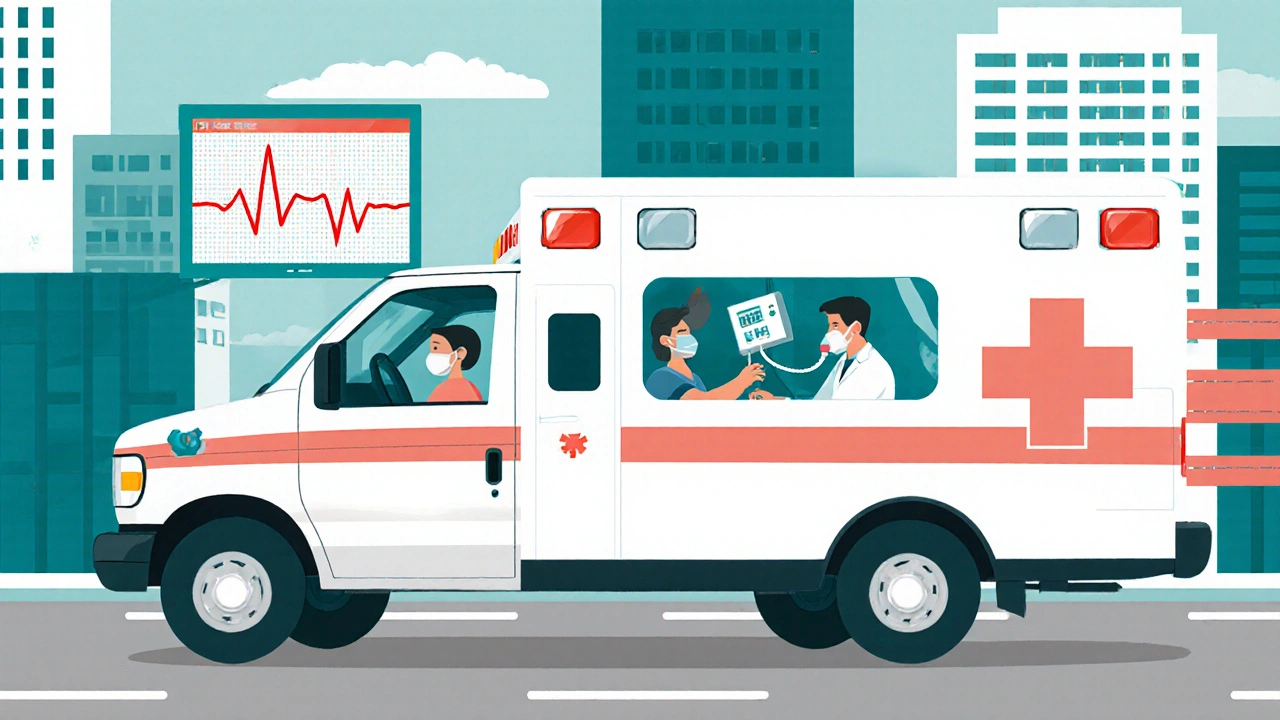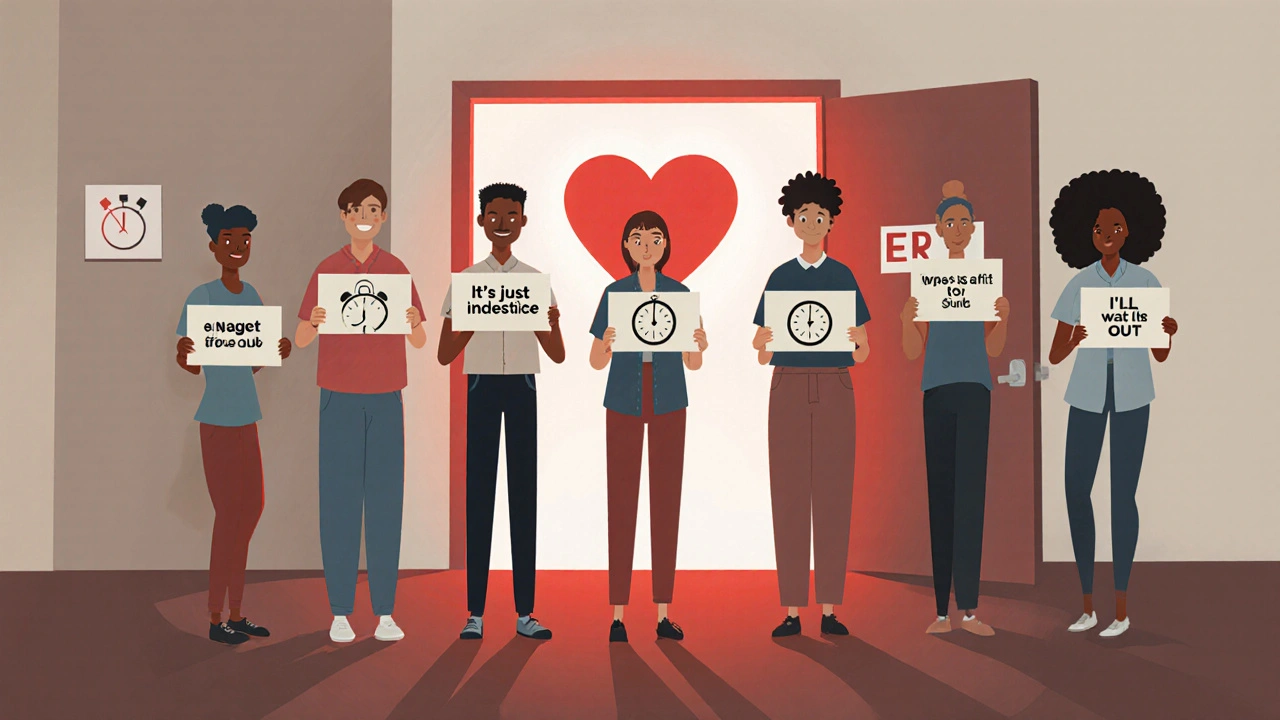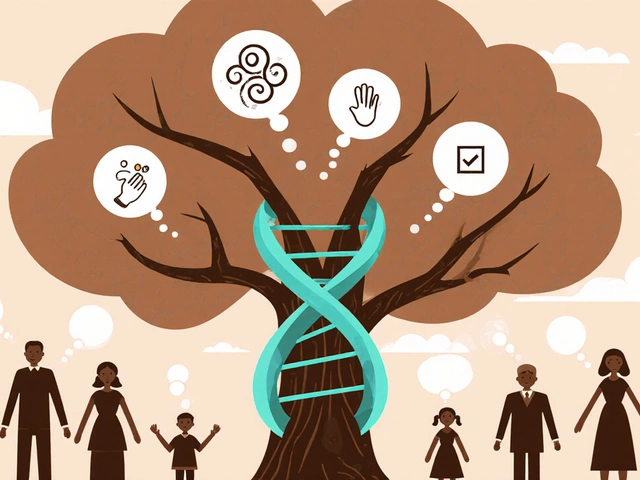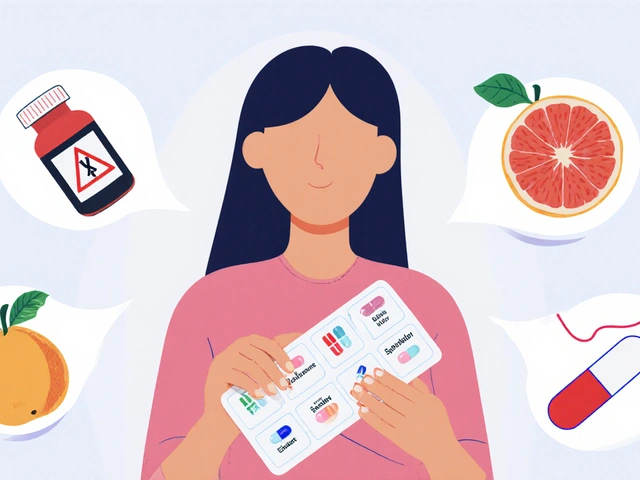Millions of people visit the emergency department every year because of chest pain. But here’s the truth: most of those cases aren’t heart attacks. Still, skipping the ER when you should go can be deadly. Knowing when chest pain is an emergency isn’t about guessing-it’s about recognizing the red flags that mean you need help now.
What Chest Pain Really Means
Chest pain isn’t just a sharp stab or a squeezing feeling in your chest. It can show up as pressure, tightness, or even a dull ache. And it doesn’t always stay in your chest. You might feel it in your jaw, neck, back, shoulders, or even your upper belly. Some people describe it like an elephant sitting on their chest. Others feel like they can’t catch their breath, or they’re suddenly exhausted for no reason. The American Heart Association defines chest pain as any discomfort in the chest or nearby areas that might signal heart trouble. That includes symptoms like nausea, sweating, dizziness, or shortness of breath-even if there’s no pain at all. These are called “anginal equivalents,” and they’re just as dangerous as classic chest pain, especially in women, older adults, and people with diabetes.When Chest Pain Is an Emergency
You don’t need to be sure it’s a heart attack to go to the ER. If you’re unsure, go. The goal isn’t to diagnose yourself-it’s to get checked out fast. Here are the signs that mean you should call 911 right now:- Pressure, squeezing, or tightness in your chest that lasts more than a few minutes, or comes and goes
- Pain that spreads to your arm, jaw, neck, or back
- Breaking out in a cold sweat, especially if it’s sudden and unexplained
- Shortness of breath with or without chest discomfort
- Nausea, vomiting, or sudden dizziness
- Feeling like you’re going to pass out
- Heart rate over 100 beats per minute, especially if you’re not exercising
- Blood pressure below 90 mmHg (you might feel faint or lightheaded)
- Crackling sounds when you breathe, or swelling in one leg
Why Calling 911 Is Better Than Driving Yourself
A lot of people think, “I’ll just drive myself to the hospital.” That’s a mistake. Studies show that patients who drive themselves to the ER have a 25-30% higher risk of complications than those transported by ambulance. Why? Because EMS crews can start life-saving care on the way. Paramedics can:- Get your ECG within minutes of arriving
- Give you aspirin and oxygen if needed
- Alert the hospital ahead of time so the cath lab team is ready
- Monitor your heart rhythm and treat dangerous arrhythmias before you even reach the door

What Happens in the Emergency Department
When you arrive at the ER with chest pain, the team moves fast. First, they check if you’re “sick or not sick.” That’s not a joke-it’s a clinical tool. If you’re pale, sweaty, breathing fast, or confused, you’re considered high risk and get immediate attention. Here’s what happens next:- ECG within 10 minutes - This is mandatory. A 12-lead ECG can show if you’re having a heart attack right now, especially if there’s a pattern called ST-elevation (STEMI). If it’s there, they activate the cath lab immediately.
- High-sensitivity troponin test - This blood test detects tiny amounts of heart muscle damage. Two tests, one at arrival and another one or two hours later, can rule out a heart attack in 70-80% of cases.
- History and exam - They’ll ask about your symptoms, risk factors (smoking, high blood pressure, family history), and whether you’ve had this before.
- HEART score - Many hospitals use this tool to assess your risk. It looks at your History, ECG findings, Age, Risk factors, and Troponin level. A score of 0-3 means low risk. 4-6 is intermediate. 7-10 is high risk.
What Doesn’t Require the ER
Not every chest discomfort needs an ambulance. Stable chest pain that:- Only happens with exertion and goes away with rest
- Has happened before and you know what triggers it
- Feels like indigestion and improves with antacids
- Is sharp and changes with breathing or position

Common Misconceptions
People often think:- “If it’s not severe, it’s not serious.” - False. Some heart attacks start mild and get worse. Don’t wait for pain to intensify.
- “I’m too young to have a heart attack.” - Heart attacks are rising in people under 40, especially women and those with obesity, diabetes, or smoking habits.
- “I’ll just take aspirin and wait.” - Aspirin helps, but it’s not a cure. You still need medical evaluation.
- “I don’t want to bother anyone.” - ER staff see thousands of chest pain cases every year. They’d rather see you 100 times for nothing than miss one real emergency.
What You Can Do Before It Happens
Prevention isn’t just about avoiding heart attacks-it’s about knowing what to do when symptoms start.- Know your risk factors: high blood pressure, high cholesterol, diabetes, smoking, family history
- Keep a list of your medications and allergies handy
- Teach your family what signs to watch for
- Keep aspirin (81 mg) in your wallet or bedside table
- Save 911 as a speed dial on your phone
What’s Changing in Emergency Care
The way chest pain is handled is getting faster and smarter. By 2025, 75% of U.S. hospitals will use artificial intelligence to analyze ECGs. These AI tools can spot tiny changes in heart rhythm that even experienced doctors might miss. That means quicker diagnoses and fewer missed heart attacks. Also, high-sensitivity troponin tests are now used in 90% of U.S. hospitals. That’s a big deal. In the past, you might have waited 6-8 hours for a final answer. Now, many patients are ruled out for heart attack in under two hours. The big takeaway? Emergency care for chest pain is more precise than ever. But none of it matters if you don’t show up.Can chest pain be caused by something other than a heart attack?
Yes. Chest pain can come from acid reflux, muscle strain, lung issues like pneumonia or a pulmonary embolism, anxiety, or even shingles. But you can’t tell the difference on your own. That’s why medical evaluation is necessary. Even if it turns out to be something minor, getting checked eliminates the risk of missing a life-threatening condition.
What if I have chest pain but no other symptoms?
Don’t ignore it. Some heart attacks, especially in women and older adults, happen with minimal symptoms-just fatigue, nausea, or mild discomfort. If the pain is new, unusual, or lasts more than a few minutes, treat it as a possible emergency. It’s better to be safe than sorry.
Is it safe to wait and see if chest pain goes away?
No. Heart muscle dies quickly when it’s starved of oxygen. Every minute counts. Waiting can lead to permanent damage, heart failure, or death. Even if the pain fades, the underlying cause might still be there. Emergency evaluation is the only way to know for sure.
Can I use a home ECG device like Apple Watch to check for a heart attack?
Home ECG devices can detect irregular heart rhythms like atrial fibrillation, but they cannot diagnose a heart attack. They don’t pick up the specific ECG changes that signal blocked arteries. Relying on them instead of calling 911 can delay critical care. Use them for monitoring, not emergency diagnosis.
What should I do if someone else has chest pain?
Call 911 immediately. Don’t wait for them to say it’s serious. If they’re unconscious and not breathing, start CPR. If you have aspirin and they’re conscious, give them one 81 mg tablet to chew. Never give them anything else unless instructed by emergency dispatchers. Time is muscle-and your quick action could save their life.








Conor McNamara November 19, 2025
i swear the er is just a money machine. theyll hook you up to 10 machines, give you 3 blood tests, and charge you 12k for a panic attack. i had this happen last year. turned out i just ate bad shrimp. still got billed for a full cardiac workup. #corporatehealthcare
Leilani O'Neill November 19, 2025
It's frankly irresponsible to suggest that people without medical training should self-assess cardiac symptoms. The notion that 'if it's not severe, it's not serious' is dangerously naive. This is why mortality rates remain elevated in populations that distrust institutional medicine.
Riohlo (Or Rio) Marie November 20, 2025
Oh sweet mercy. Another feel-good public health pamphlet disguised as medical advice. Let me guess-next you’ll tell us that drinking kale smoothies prevents myocardial infarction? The entire system is built on fear-mongering and profit-driven triage. You don’t need an ECG to know when your body’s screaming. You need to stop ignoring it for 12 years while you binge on donuts and Netflix.
steffi walsh November 21, 2025
This is so important 🙏 I used to think chest pain was just stress until my mom had a silent heart attack and didn’t even realize it. She just felt 'off' for two days. Please, if you're unsure-go. You won't regret it. Your future self will thank you 💪
Katelyn Sykes November 21, 2025
Honestly the most useful part here is the HEART score breakdown. I work in primary care and we use this daily. If you’re low risk and your troponin’s clean at 2 hours? You’re probably good. But if you’re even a little unsure? Go anyway. Better safe than sorry
Gabe Solack November 23, 2025
Just had a coworker ignore chest pain for 3 days because he 'didn’t want to be that guy.' Ended up with a 90% blockage. He’s fine now but barely made it. Please don’t be like him. Call 911. Seriously. 🚑❤️
Holly Powell November 24, 2025
The reliance on AI-driven ECG interpretation is a catastrophic overcorrection. Algorithmic diagnostics lack contextual nuance. A 32-year-old woman presenting with fatigue and diaphoresis is not a 'STEMI mimic'-she’s a patient with a systemic pathology that requires human clinical reasoning, not a machine trained on biased datasets.
Emanuel Jalba November 25, 2025
THEY’RE LYING TO YOU. THEY KNOW MOST CHEST PAINS AREN’T HEART ATTACKS SO THEY PUSH YOU INTO THE ER TO MAKE MONEY. I SAW A DOCUMENTARY. THEY GET PAID PER TEST. THEY WANT YOU TO THINK YOU’RE DYING. DON’T BELIEVE THE HYPE. JUST TAKE ASPIRIN AND WAIT IT OUT. I DID. I’M FINE.
Heidi R November 27, 2025
You’re telling me to call 911 but not to mention my history of GERD? That’s not helpful. If I’ve had this exact pain 5 times before and antacids fix it, why am I wasting ambulance resources? You’re gaslighting people with chronic conditions.
Brenda Kuter November 27, 2025
I know someone who died because she waited. She said 'it’s probably just anxiety' and then collapsed at work. Her husband found her. No warning. No time. I’m not letting anyone I love make that mistake again. If you feel weird in your chest? CALL. 911. NOW.
Shaun Barratt November 28, 2025
The clinical utility of the HEART score has been validated in multiple prospective cohort studies, including the 2021 multicenter trial published in JAMA Cardiology. Furthermore, the 90-minute door-to-balloon metric remains a critical quality indicator for PCI-capable centers. Adherence to these protocols demonstrably reduces 30-day mortality.
Iska Ede November 29, 2025
So let me get this straight. If I feel like I’m being stabbed by a tiny angry wizard, I need to call 911… but if I feel like I sat on a cactus for 3 hours, I’m fine? Cool. Thanks for the medical poetry.
Gabriella Jayne Bosticco November 29, 2025
I’ve worked ER for 14 years. The people who come in saying 'I’m fine, just checking' are the ones who end up in the cath lab. The ones who say 'I think I’m dying'? Usually just had heartburn. But we treat them all like they’re one heartbeat from death. Because sometimes, they are. Don’t be the person who regrets waiting.